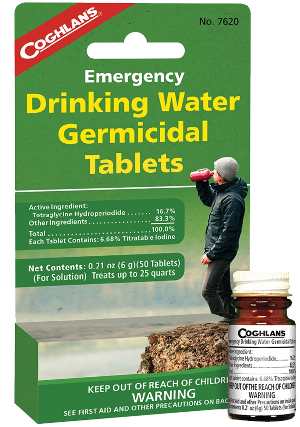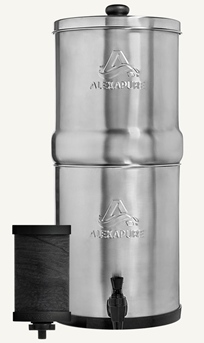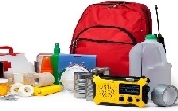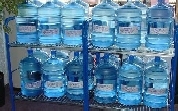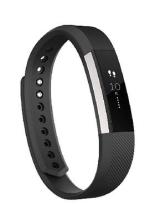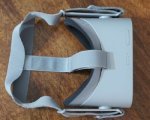Water Filtration Products

Let's put aside the problem of disaster preparedness for a moment. Later we will recommend some easy methods for treating emergency water supplies to make them potable.
How Pure is my Water?
Check it with a TDS meter
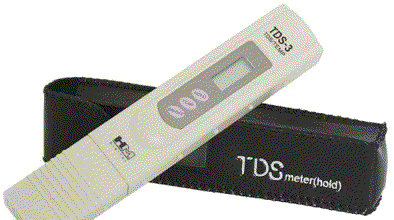
A TDS (Total Dissolved Solids) meter is an inexpensive hand-held device which measures the amount of solids (minerals, metals, salts) dissolved in a sample of water.
It does not tell you which kind of pollutants, just how much total. It does not detect or measure bacteria or other organisms which might be in the water.
A TDS meter can be helpful for determining how pure your water is. We use ours every month or two to monitor how effective our R/O Filter is, and when to change filters.
We change them out when the reading reaches 6 ppm. A TDS meter is also useful for monitoring aquarium and swimming pool water and hydroponic solution strength.
We use a TDS meter in the video below to show how effective our R/O filter is.
You can order a TDS meter for yourself via the Amazon affiliate link below.
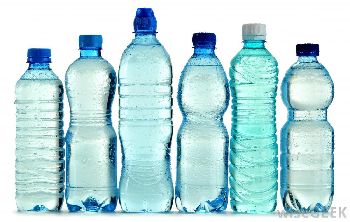
Do you drink bottled water at home, instead of water from your tap? There's no reason to go to the expense of buying drinking water when you can easily produce excellent filtered water at your kitchen sink. With one inexpensive device: a Reverse Osmosis Filter.
What is Reverse Osmosis?
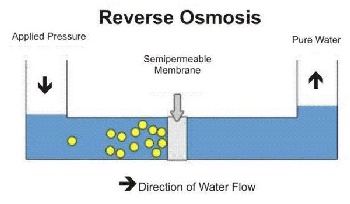
Reverse Osmosis (RO) is a very simple but effective water filtration process in which dissolved inorganic solids (such as salts, minerals and metals) are removed from the water.
The pressure in the household plumbing pushes the tap water through a semipermeable membrane and then stores the purified water in a small tank for use on demand.
RO has the ability to remove 95-99% of total dissolved solids (TDS), including chlorine, fluoride and other impurities. RO is the best overall general water filter on the home market, producing clean, tasty and safe drinking water.
We have a GE RO filter under our sink; it has lasted for over 10 years and we highly recommend it.
In this brief video, you can see how effective the R/O filter is for our home tap water. We use a TDS Meter to show the "before and after" readings. It dropped from 48ppm to 0ppm!

GE Reverse Osmosis Filter
Quit buying expensive bottled water!
Move towards cleaner, healthier water by ordering your RO filter today! Amazon affiliate link below is cost-free:
Now, back to survival preparations...
Emergency Water From Your Own Land
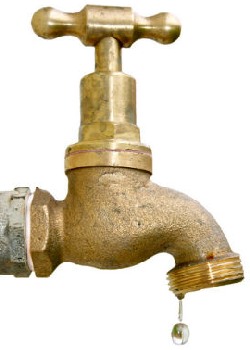
So you live on city water? What are you going to do when the taps shut off?
Think ahead! Even if your tap water is supplied by the city, investigate the feasibility of dropping a deep water well too! This can be done even in the suburbs.
And go even further; plan your well so that it is equipped with not only a submersible electric pump, but a deep-well hand pump.
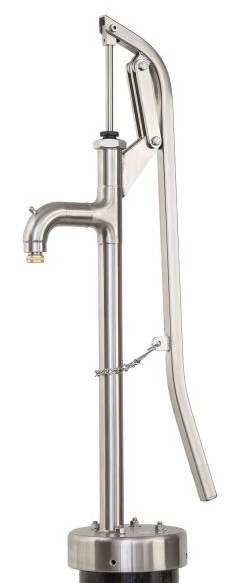 Bison Hand Pump
Bison Hand Pump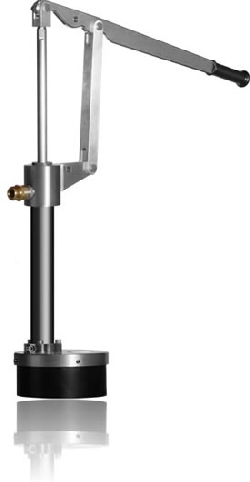 The Simple Hand Pump
The Simple Hand PumpToo expensive?
- Don't forget that well water does not run through a meter... it's free! No more payments to the water company.
- You won't regret having put in a well the day you're the only one in your neighborhood with any water at all.
Already have a well?
Look into retro-fitting it with a Bison Hand Pump or Simple Hand Pump. (We get no kickback at all from these recommendations.)
If retro-fitting is not an option, check out this article for more ideas:
How to get water out of your well when the power goes off.
Finding Water On The Run
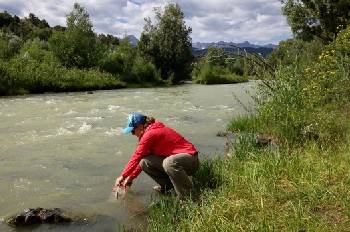
We have advised you to use an RO filter for a ready supply of great drinking water in your home. Then we recommended you stockpile gallons of sealed, bottled water for short-term emergency situations.
And hopefully you followed our advice above and dropped a deep water well on your property for long-term survival. You have done well :) and are as prepared as you can be for a survival water supply...
But what if a disaster strikes which forces you from your home? You snatch up your bug-out bags and take off. Well, you'd darn well better have something in your kit with which to purify water and make it drinkable!
If you need to find water while on the run or at an alternate sheltered location, you can use these possible sources:
- Rainwater
- Streams, rivers, and other moving bodies of water
- Ponds and lakes
- Natural springs
Water Filtration Products
In The Field
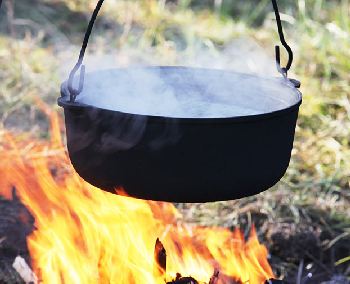
If you are unsure about the quality of any water you have found, it should be purified before using it for drinking, food preparation, or hygiene.
As far as killing bad bacteria in the water, boiling or chlorination with household bleach will kill most microorganisms. Although these measures will not remove other contaminants such as heavy metals, salts, and other chemicals, rendering it free of bacteria will make it drinkable in a pinch.

Boiling is the safest method of treating water for bacteria. Keep it at a rolling boil for one minute to get the job done.
Liquid bleach will also kill microorganisms, without heat. Only use standard 5.25 to 6.0% household chlorine bleach, with no additives for laundry, like scent.
How? Use 1/8 tsp. (12 drops) of bleach per gallon of water, stir and let stand for 30 minutes. The water should have a slight bleach odor, but is safe to drink.
Water Filtration Products
Purification Tablets
Carting around a jug of bleach would be hard to do if you are on the run. Always keep water purification products (germicidal tablets) in your bug-out kit.
Drinking Water Germicidal Tablets can be used to disinfect drinking water in emergency situations. One tablet will treat about a quart of water, rendering it suitable for drinking.
Water Filtration Products
Alexapure Pro Portable Filter
This amazing (non-electric) gravity-fed device can be used at home or in camp to transform any fresh water source into safe and clean drinking water.
This water filtration product consists of a gravity block core with a hybrid ceramic shell. It reportedly removes up to 99.9999% of contaminants, including metals, bacteria, VOCs, TCP and nitrates.
If you have the room for it, keep one in the trunk of your car, bug-out bag or for camping. Click here for more info.
Water Filtration Products
UV & Filter Bottles
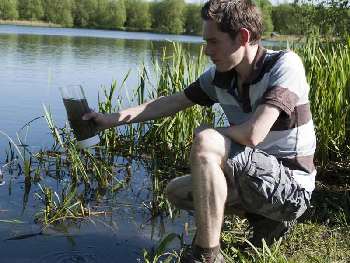
One last water filtration product we recommend to purify water outside the home: Filtration with UV Sterilization and Sediment Filter.
First watch our video in which we collect water from a local lake, treat it with both the SteriPen System below and Water Purification Tablets, then taste it!

SteriPen Water Purification System
The SteriPEN® Water Purification System is easy to use and carry. System includes the SteriPen pre-filter to screen out particulates and sediment. Next, the SteriPen UV sterilization pen is inserted in the water and activated, killing over 99.9% of bacteria, viruses, and protozoa.
Clean, pure, safe drinking water from any source. Clever!


